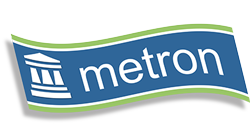To date we’ve considered justifying capacity management (CM)from a financial perspective.
There has been consideration of the costs involved with implementing a new CM software product or process. In contrast we looked at the savings that could accrue, splitting them into ‘hard’ or actual cash savings and ‘soft’ savings where there was a benefit to the business that was not necessarily an increase in revenue or reduction in costs.
Justifying this to a CIO usually involves putting this together into an equation that forms a return on investment (ROI) calculation.
I stated this equation in my first blog as:
(Savings from CM software) – (Money spent on CM software) > zero, pretty quickly
These days, ‘zero, pretty quickly’ typically means less than a year. So, if there are $2m savings and the costs are $1m, CM looks like a good deal.
One must consider the time factor however. If buying new software, software costs are incurred on day one. Maintenance costs are monthly throughout the year. Training and implementation services usually happen according to a schedule over the initial months. Maintenance costs can increase after year one. CM and other staff costs are incurred over time and will probably increase over time. Hardware costs could be one time (purchase) or spread over time (lease or internal chargeback). Somewhere in the calculation one must include all associated costs, such as hardware and environmental (power, space) costs.
Benefits rarely if ever accrue from day one. It takes time to set up and derive benefits from new software or processes. Aside from the difficulties of deriving or getting the business to offer estimates of some of the cost savings that capacity management will bring, one needs to assess how long it will take before your new product or process delivers those savings.
What I would say is that the more of these subtle considerations are included by the capacity analyst or manager making his case for budget, the more likely the CIO will be to accept the justification and ROI. CIO’s understand the value of money, that spending deferred now will buy more resource later, that it takes time for benefits to accrue, that even if salaries aren’t saved, freeing people up to do other things has a value over time. Not including or making reference to these subtleties will make your ROI calculation look simplistic and overly-optimistic – not characteristics favoured by most CIOs. The time and effort finding out, or even just guessing at some of the more complicated aspects of ROI will pay dividends in getting your case approved.
If all goes to plan and you’ve used a spreadsheet approach to putting the figures together, you should end up with a picture something like this:
Here we see that despite a significant outlay, the CM solution will have paid back its initial investment in six months and produces a return of several hundred percent within two years.
This is a reasonable expectation when implementing our Athene software. Not just mathematical formulae and pretty graphs then!
After twenty plus years in this business I’m still learning everyday so I’m open to your comments on capacity management and welcome your feedback.
Andrew Smith
Chief Sales & Marketing Officer

